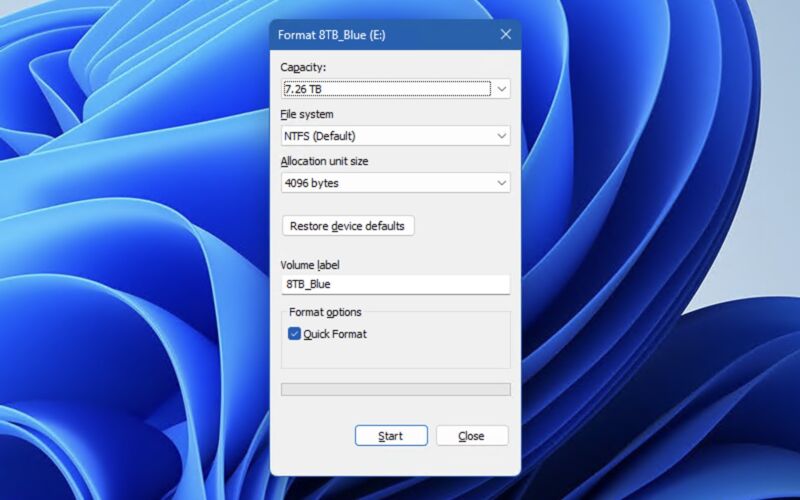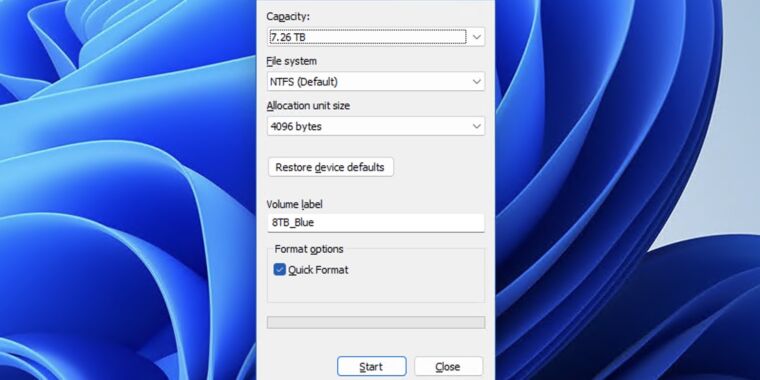
Andrew Cunningham
While we wait for this fall’s Windows 11 24H2 update to hit the general public, work continues on other new features that could be part of other future Windows updates. A new Canary Channel Windows Insider build released yesterday addresses a decades-old and arbitrary limitation that limited new FAT32 partitions to 32GB, even though the file system itself has a maximum supported size of 2TB (and Windows can read and recognize 2TB FAT32 partitions with no issues).
For now, this limit is only lifted for the command-line formatting tools in Windows. The disk formatting UI, which looks more or less the same now as it did when it was introduced nearly 30 years ago in Windows NT 4.0, still has the arbitrary capacity limitation of 32 GB.
The 32GB limit can probably be attributed to former Microsoft programmer Dave Plummer, who occasionally shares stories about his time working on Windows in the '90s and early 2000s. Plummer says he wrote the file format dialog intended as a “workaround” solution, and arbitrarily chose 32GB as a disk size limit, likely because it seemed large enough at the time (Windows NT 4.0 required a whopping 110MB of disk space).
There aren’t many reasons to actually use a FAT32 drive in 2024, and it’s been replaced by other file systems for just about everything. As the file system for your main OS drive, it was replaced by NTFS decades ago; as a broadly compatible file system for external drives that can be read and written to by many operating systems, you’ll probably want to use exFAT. FAT32 still has a 4GB limit on the size of individual files.
But if you're formatting a drive for use with an old version of Windows, or with an older device that can only work with FAT32 drives, this tweak can make Windows a little bit more useful to you.
List image by Alpha Six

